Custer State Park is in the very south of the Black Hills. Our visit there focused on its work in wildlife management and habitat preservation. It is home to one of the largest publicly owned bison herds, but we saw many other animals during our visit.
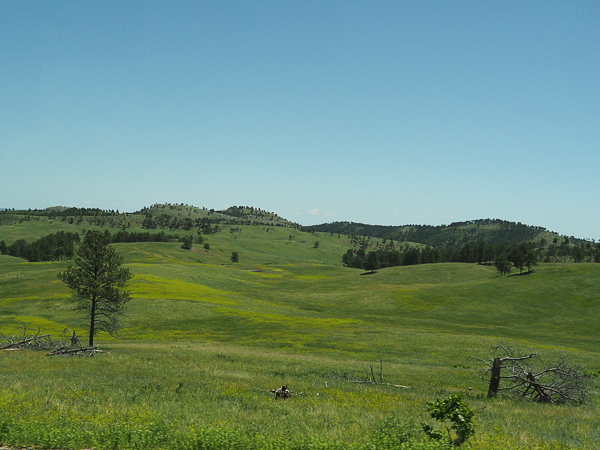
The rolling country-side leading up to the Black Hills had a specific name that I've forgotten, but it featured these hummocky hills. By visiting in the early summer, especially after a relatively wet spring, we saw plenty of brilliant green.
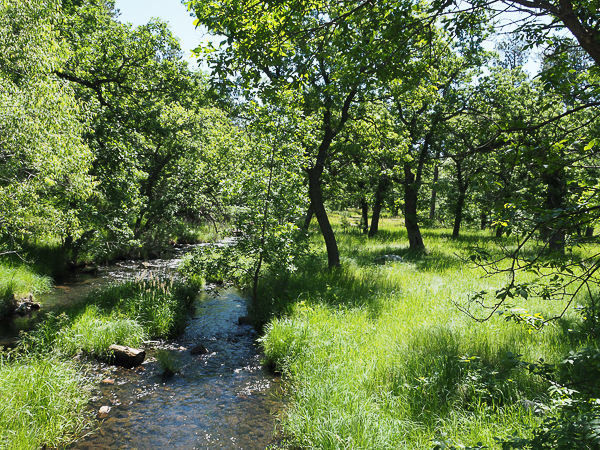
Our first stop was the Visitor Center where we walked around to stretch our legs after the long bus ride.
This brook ran from a small pond in front of the center.
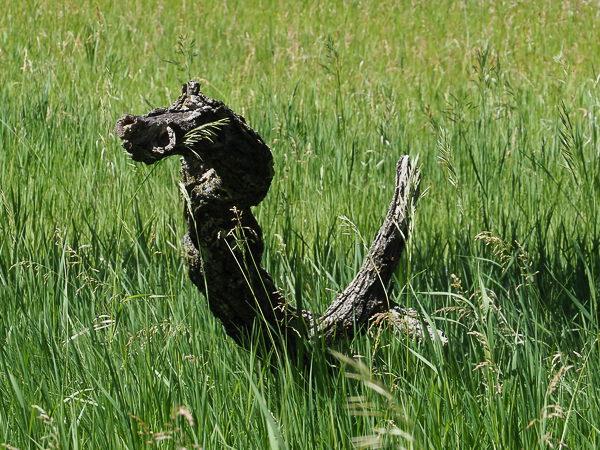
I was expecting bison, deer, and antelope, but not a "Custer State Monster!" This tree limb in a sea of grass suggests some of the Nessie pictures.
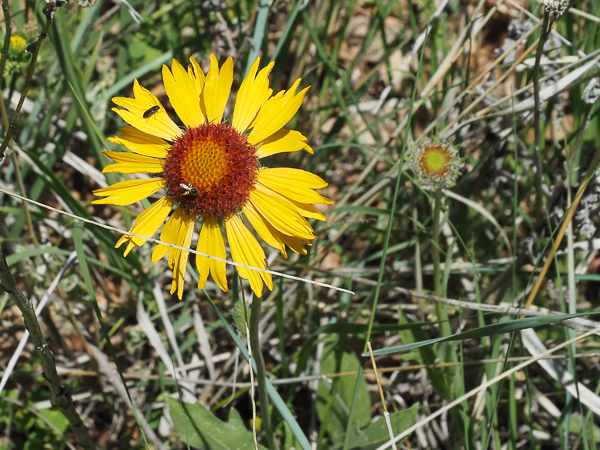
This lonely flower was back of the visitor center. It is sneezeweed.
Sunflowers are a major crop in the Dakotas.
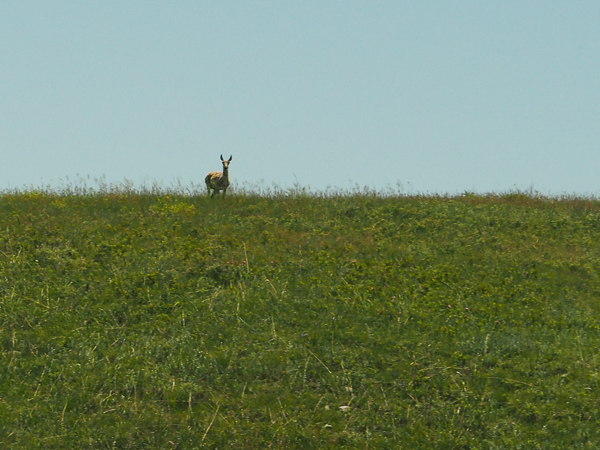
I believe this to be a mule deer although it is too far away to be sure. It was the first wildlife creature I was able to capture from the bus. We also saw plenty of white-tailed deer, but since we see more than enough of them back home, I didn't take any pictures.
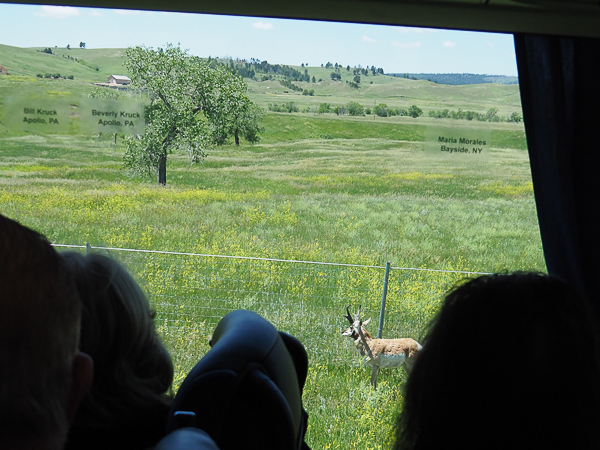
This was the best I could do for a pronghorn picture. We were on the wrong side of the bus that day and it seemed too rude to jump into someone's lap (although I considered it).
The Bison Center is the building across the valley. We are on our way there.
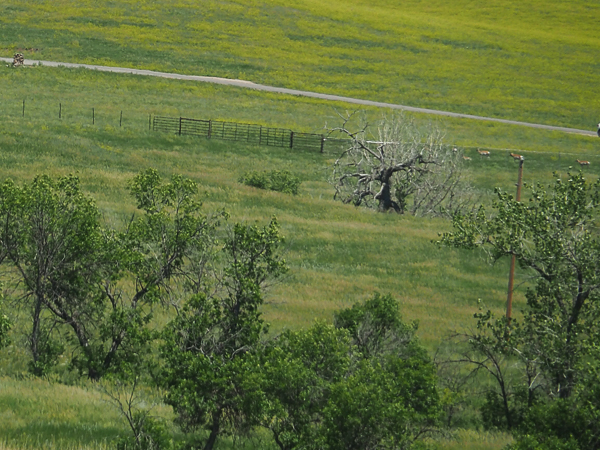
This picture is from the Bison Center looking back to the pronghorn seen above and its buddies. They are the tan blips to the right of the dead tree. Trust me, they are pronghorns!
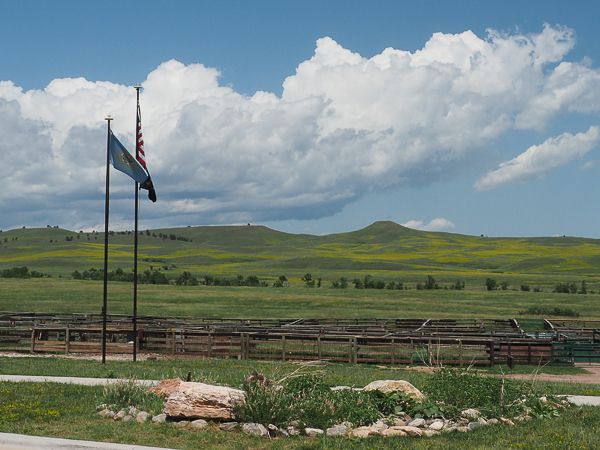
One of the great tourist attractions at Custer State Park is the annual bison roundup. Volunteer wranglers (must apply and presumably provide credentials), drive the bison into these corrals. The calves are vaccinated and mature animals are culled if needed. The carrying capacity of the range is calculated based on predicted weather and the herd is maintained at a sustainable level. Culled animals are sold to other herds.
Older open cows are believed to be past their fertile years and culled. Young bulls are tested for fertility and genetic contribution to the herd. In many cases, although it was not mentioned here, this is done to eliminate any vestigial DNA contribution from cattle, which have been cross-bred with bison. We asked one of the rangers exactly how the fertility testing was done and his answer was evasive. I wouldn't want to be the one collecting semen from a bison bull!
Although the American Bison is NOT a buffalo, the terms are used interchangeably. Check this discussion from the National Park Service on everything bison. The bison is more closely related to the yak than any of the true buffalo species.
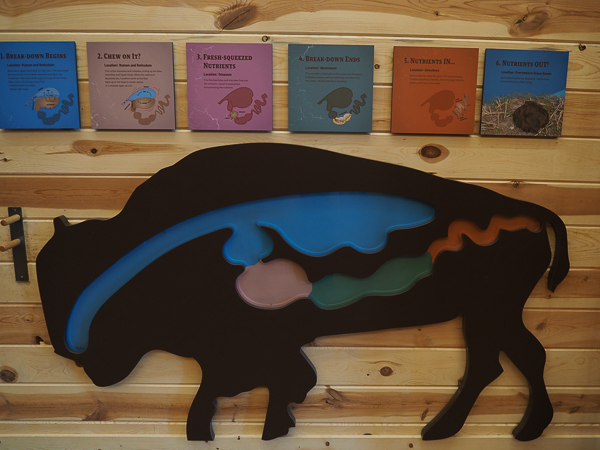
I have always been puzzled by the assertion that cattle and other ruminants have "four stomachs" (actually, one stomach with four chambers). This graphic was the first time I had seen this explained.
After its first round of chewing, food goes into the rumen (the big blue blob) to begin digestion by symbiotic microbes. From there some of the ingested food moves to the reticulum (the little blue blob) to continue processing while the coarser bits are re-chewed as the "cud." When it's on your plate the reticulum is called "tripe."
From the reticulum, food moves into the omasum (the pink blob) where excess liquid is absorbed. Coarse fiber remains here for additional digestion while finer materials proceeds to the abomasum (the greenish blob), which is most like our stomach. Further digestion takes place there. When calves are still nursing, milk bypasses the earlier stages and proceeds directly to the abomasum.
When food leaves the stomach it goes into the small intestine to complete digestion and the large intestine to complete absorption (the reddish squiggles). The entire process is designed to extract the most nutrition out of the poor quality food of the prairie.
Now you know more than you ever wanted about ruminant digestion.
Horses have a different approach to the same problem. It's simpler, but at least in domestic horses, more prone to problems.
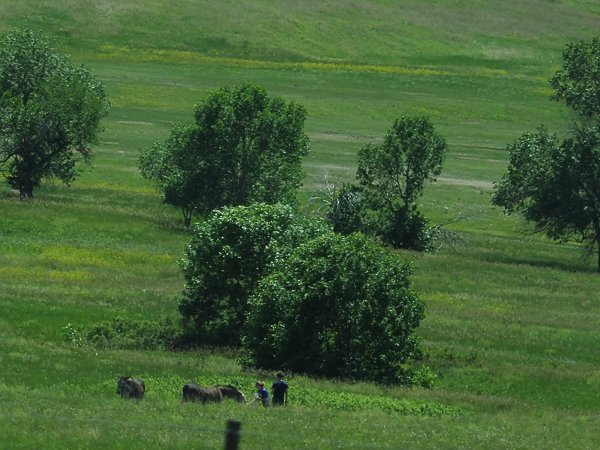
We drove past wild burros, also found in the park, and a family that appears to be feeding them.
Some people are idiots!
Years ago in California we saw parents encouraging their children to get close to wild elk so mom and dad could take pictures.
We were repeatedly warned to stay away from wild animals, even burros that can bite, kick, and trample. Some years back a woman approached a bison calf at Custer State Park and was attacked by its mother. She was not seriously injured because her pants came off! Better to be embarrassed than dead or crippled, but best to be rational and stay away. This is not Disneyland.
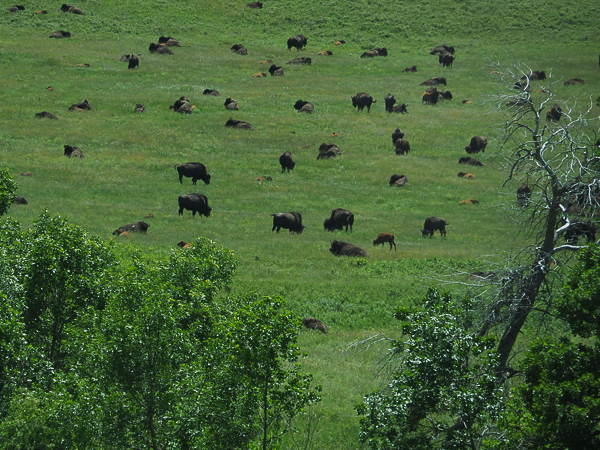
At one point we passed a large collection of bison peacefully grazing across a creek. Calves are smaller and lighter in color than adults.
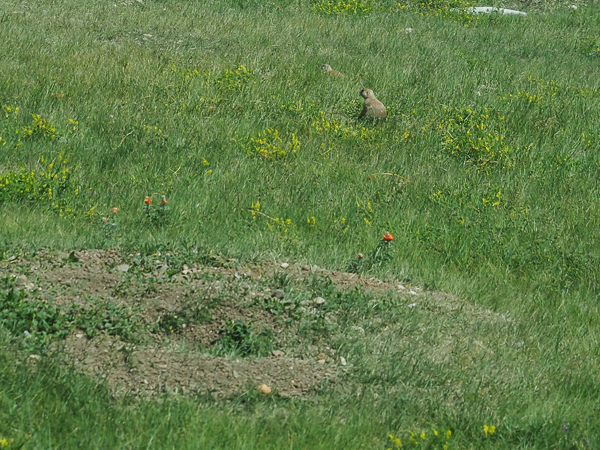
We passed numerous prairie dog "towns."
Prairie dogs are a keystone species that defines the prairie grasslands. Their burrows provide habitat for other animals and the animals themselves provide food for predators.
Unfortunately they don't co-exist well with humans. They undermine dams and roads, compete with livestock for grass, chew through irrigation piping and electrical cables, etc. In addition they can carry plague.
Organizations such as the Defenders of Wildlife attempt to protect (native) prairie dogs by minimizing conflicts with (non-native) humans.
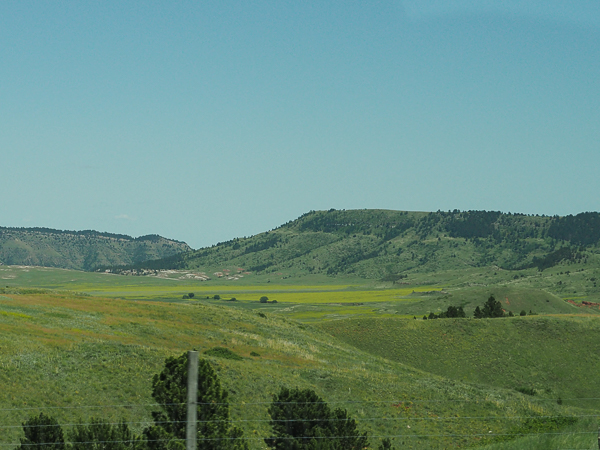
As we return to Rapid City we pass through the Dakota Sandstone Hogback that forms the outer-most circle of the Black Hills. The ridge is steeper on this side adjacent to the "racetrack" or Red Valley and has a more gradual slope on the far side.
The valley is called "red" because of the red soils.
The term racetrack comes from a Lakota legend that it was created by a great race between the native animals. Their blood stained the land. Buffalo won the race and thereby became the supreme animal on the plains.
Click your "back" button to return to the previous page or click for our picture album.